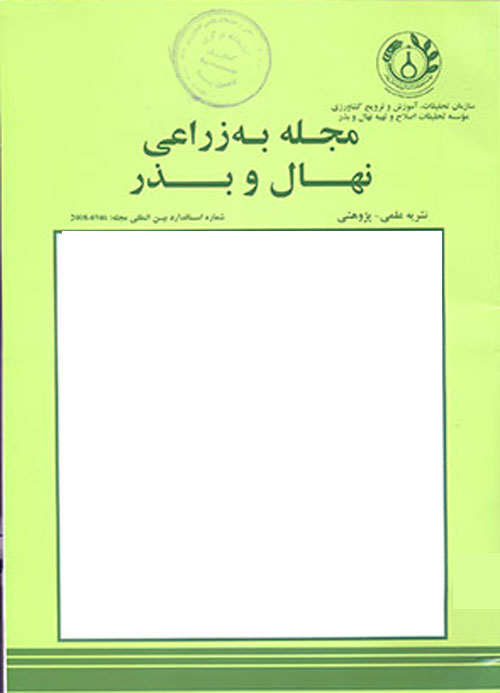Effect of Application of Different Inputs on Irrigated Wheat Grain Yield in Neishabour Region
Author(s):
Abstract:
To study effects of adoption rate of application of recommended technologies in irrigated wheat production systems, this study was carried out in Neishabour region in 2005. One hundred and fifty three farmers were randomly sampled. Required data were collected using questionnaire. Depertin function was employed to estimate the impact of socio-economic factors on wheat grain yield. Breakeven analysis were performed for determination of minimum price of wheat grain. Results revealed that average seed, phosphate, potassium and urea application rates were 225, 167.3, 72.5 and 221.4 kg/ha, respectively. Average application rate for herbicides and pesticides were 1.7 and 1.4 Lit./ha, respectively. Average irrigation water used in the region was 5325m3/ha. Average grain and straw yields were 3451 and 2887 kg/ha, respectively. Irrigation interval and frequency were 16 days and two irrigations, respectively. However, recommended irrigation interval for the region was 10-12 days. Net profit of wheat production in machine and hand harvested systems were 952000 and 633000 rials/ha respectively. Minimum price of wheat in machine and harvested systems were 462000 and 554000 rials/ha, respectively. Coefficient of determination for variables used in the model for estimation of the effect of different inputs on wheat grain yield in Neishabour region was 0.552. Wheat producers used land, seed, labor, phosphate and irrigation water, efficiently, because the estimated elasticity of production for them varied from zero to unit. Marginal value of production for land, seed, labor, phosphate and irrigated water was estimated as 38.2, 6.5, 0.42, 3.1 and 126.6 rials/ha, respectively.
Language:
Persian
Published:
Seed and Plant Production Journal, Volume:26 Issue: 1, 2010
Pages:
69 to 83
https://magiran.com/p778976


